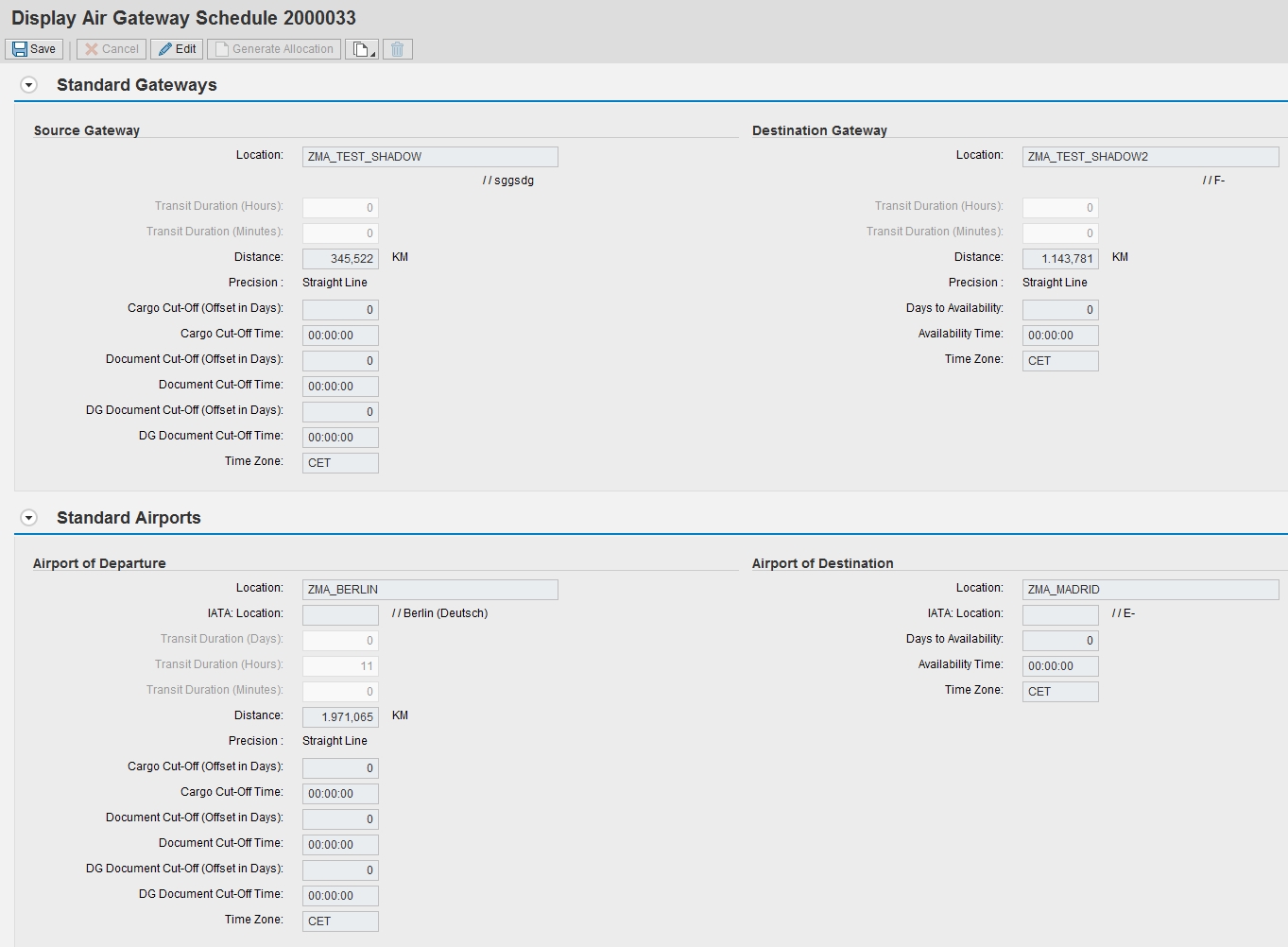
- SAP Community
- Products and Technology
- Supply Chain Management
- SCM Blogs by SAP
- Monday Knowledge Snippet (MKS) - 26 Carrier vs. Ga...
- Subscribe to RSS Feed
- Mark as New
- Mark as Read
- Bookmark
- Subscribe
- Printer Friendly Page
- Report Inappropriate Content
Last week I started explaining how SAP Transportation Management handles schedule information: http://scn.sap.com/community/scm/transportation-management/blog/2013/01/07/monday-knowledge-snippet-...
Todays topic is Carrier vs. Gateway schedules. What is this all about? Isn't a schedule a schedule? Well, depending on the business you are in (Remember, SAP TM covers different types of businesses?), one or the other might be relevant for you.
Carrier schedules are basically the 'real' transportation executed by the schedule vehicle may it be a plane, vessel, train, or truck. Usually stopping at locations very commonly used and shared by many different carrier like ports or airports. Examples for carrier schedules are flights for air transportation and vessel voyages for ocean, but can also be truck schedules. What information is important for carrier schedules? Of course locations and times. When and from where does the plane depart? When do you have to be there to catch it? When does it land? Which carrier does the transportation? What can be transported? And so on.

Carrier Schedule (example of air)
Carrier schedule can have multiple stops (so not just a start and destination, which is probably quite common for air) and even be executed by different carriers on different stages (connection schedule). It is usually possible to use a multi-stop carrier schedule in any sequential location combination, so it is not required to start at the first and leave at the last location. Of course exceptions exist...
And now comes the interesting part for your scenario: If such a carrier schedule can or shall be used directly depends on your business. For example in the air freight business goods are very seldom delivered directly to the airport, but must go via a gateway location or carrier warehouse. Such a location might be required for consolidation or legal regulations. Also: Do you do business directly with air or ocean carriers or do you use services of freight forwarders?
Gateway schedules basically wrap a carrier schedule with the just mentioned gateway locations. In the ocean business these locations are called container freight stations (CFS), for air gateway. Gateway schedules have additional information attached, mostly time related (document and cargo cut-off). For the information between the ports / airports a gateway schedule can reference carrier schedules to directly get the information from there. This reference can be done for each stage to cover also connections. Gateway schedules can only be used going via the gateways, so it is not possible to skip those and go directly via the port / airport. For the transportation from gateway to port / airport it is assumed that this is handled by the carrier (some trucks driving around the airport bringing the goods to the plane) and not relevant for the overall transportation chain. The times are covered by the cut-off.

Gateway Schedule (example for air)

Gateway Schedule location sequence
How can it be defined if a schedule is a carrier or gateway schedule? Checking out the schedule type, you will recognize an indicator called 'Gateway' enabling the usage of gateway locations. SAP TM comes with predefined schedules types and transportation mode specific user interfaces.
Do I need a carrier schedule when creating a gateway schedule? No, you don't. But in a full blown scenario integrating voyages or flights from external sources, you might want to let your gateway schedules know when something in the carrier schedules has changed.
How can these schedules be used for planning? Both types can be used. It depends on your network setup. For example if you pick up goods from customers within a certain transportation zone and want to use a gateway schedule, you maintain a transportation lane for the pre-carriage and assign the GATEWAY as transshipment location for the zone. So even if now carrier schedules for the airport exist, they will not be considered directly as they can not be reached without using the gateway. Keep in mind that often the planning is done on bookings and not directly on the schedules. These serve in the capacity mangement as foundation for the booking creation. But that's another story...
- SAP Managed Tags:
- SAP Transportation Management
You must be a registered user to add a comment. If you've already registered, sign in. Otherwise, register and sign in.
-
Business Trends
169 -
Business Trends
24 -
Catalog Enablement
1 -
Event Information
47 -
Event Information
4 -
Expert Insights
12 -
Expert Insights
38 -
intelligent asset management
1 -
Life at SAP
63 -
Product Updates
500 -
Product Updates
66 -
Release Announcement
1 -
SAP Digital Manufacturing for execution
1 -
Super Bowl
1 -
Supply Chain
1 -
Sustainability
1 -
Swifties
1 -
Technology Updates
187 -
Technology Updates
17
- ‘Dune: Part 2’ Box Office Inspires Spicy Supply Chain Comparison in Supply Chain Management Blogs by SAP
- Transforming Cell Gene Therapy Operations: The Power of Integrated Scheduling and Resource Planning Systems in Supply Chain Management Blogs by SAP
- Transforming Digital Supply Chains with AI in Supply Chain Management Blogs by SAP
- Kazakhstan and Uzbekistan national track & trace digital systems. Compliance with SAP ATTP - Part 2 in Supply Chain Management Blogs by Members
- Supply Chains and Mothers’ Special Bond in Supply Chain Management Blogs by SAP
| User | Count |
|---|---|
| 9 | |
| 8 | |
| 5 | |
| 4 | |
| 3 | |
| 3 | |
| 3 | |
| 3 | |
| 3 | |
| 3 |